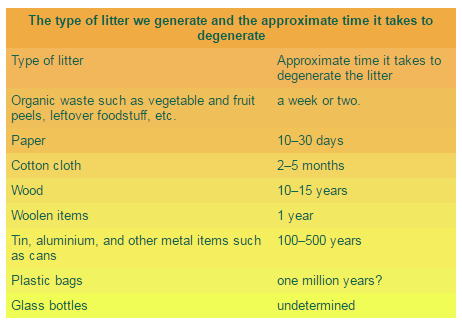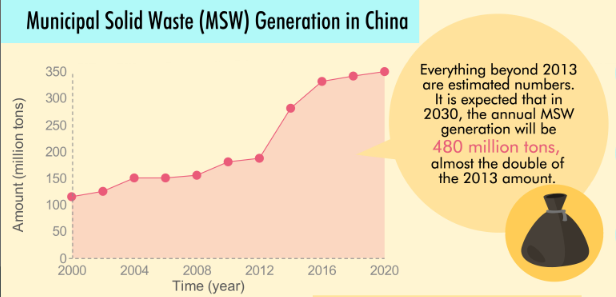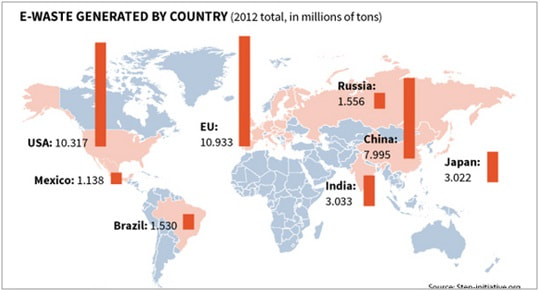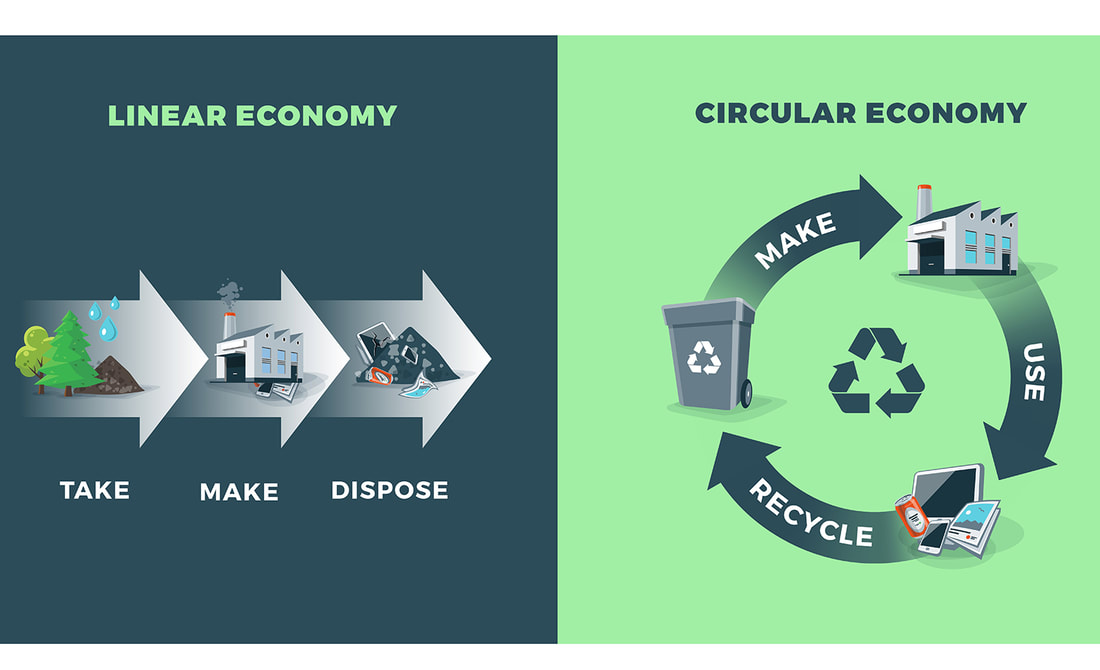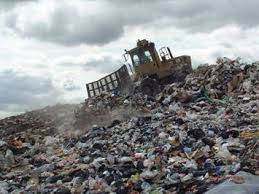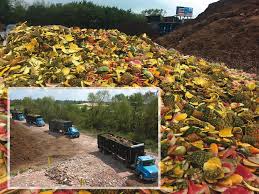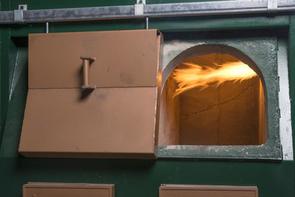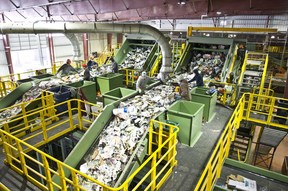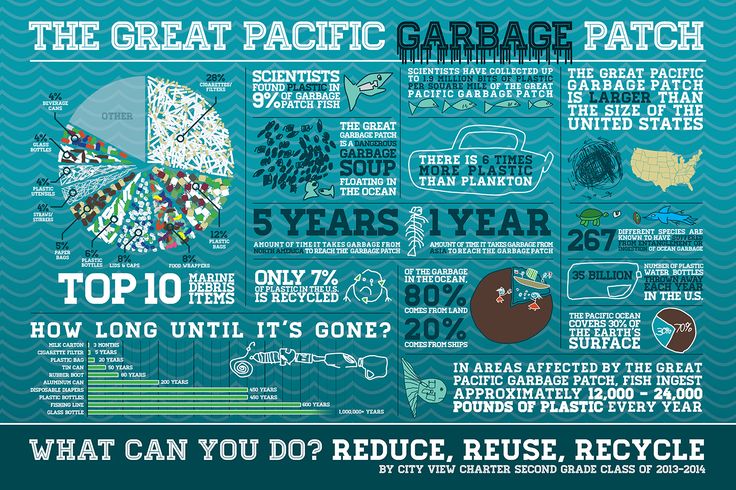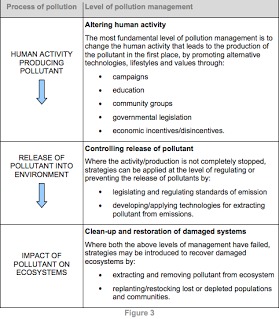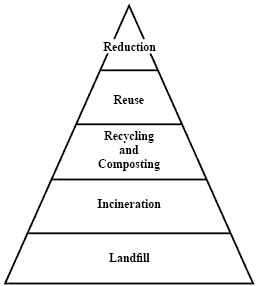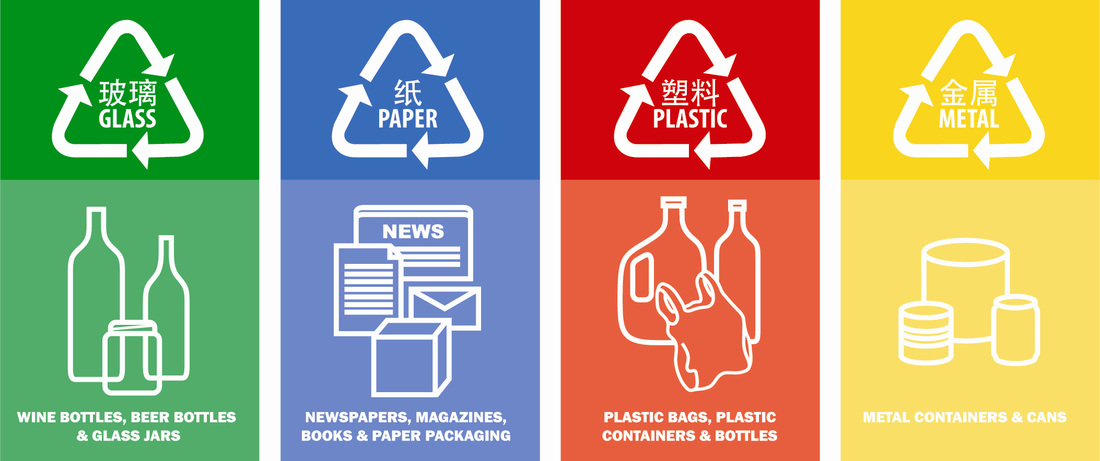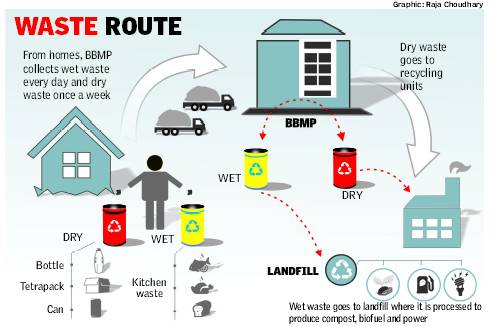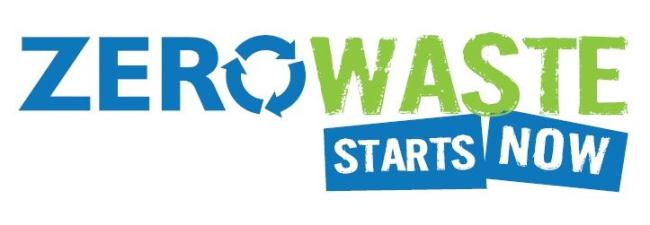topic 8.3: solid domestic waste
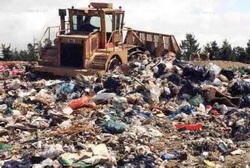 image from www.scrd.ca
image from www.scrd.ca
Domestic solid waste, commonly known as trash or garbage (US), refuse or rubbish(UK) is a waste type consisting of everyday items that are discarded by the public. The organic waste potions consist of food and kitchen waste, yard trimmings or other garden waste. Inorganic waste consists of paper, corrugated cardboard, plastic, glass, wood, and metal products such as drink cans.
In this unit we will look at your contribution to domestic waste as well as the waste contributed by our community. We will also look at different management strategies in dealing with domestic waste.
This unit is a minimum of 3 hours.
In this unit we will look at your contribution to domestic waste as well as the waste contributed by our community. We will also look at different management strategies in dealing with domestic waste.
This unit is a minimum of 3 hours.
Significant Ideas
- Solid domestic waste (SDW) is increasing as a result of growing human populations and consumption
- Both the production and management of SDW can have significant influence on sustainability
Big questions:
- What strengths and weaknesses of the systems approach and the use of models have been revealed through this topic?
- To what extend have the solutions emerging from this topic been directed at preventing environmental impacts, limiting the extent of the environmental impacts, or restoring systems in which environmental impacts have already occurred?
- What value systems can you identify at play in the causes an approaches to resolving the issues addressed in this topic?
- How does your own value system compare with others you have encountered in the context of issues raised in this topic?
- How are the issues addressed in this topic of relevance to sustainability or sustainable development?
- In what ways might the solutions explored in this topic alter your predictions for the state of human societies and the biosphere some decades from now?
- How do models and/or a systems approach help our understanding of solid domestic waste/
- Evaluate the alternatives for the disposal of solid domestic waste.
- How do environmental value systems influence the disposal of solid domestic waste?
- What are your views on this?
- Examine the relationship between solid domestic waste and sustainability
- How is solid domestic waste likely to change over the next few decades? Give reasons for your answer.
Knowledge and Understanding:
8.3.U1 There are different types of SDW, the volume and composition of which changes over time
[SDW includes household waste such as paper, glass, metal, plastics, organic (kitchen or garden) packaging, construction debris, and clothing]
[SDW includes household waste such as paper, glass, metal, plastics, organic (kitchen or garden) packaging, construction debris, and clothing]
- Define solid domestic waste
- List examples of solid domestic waste
- Describe and explain the changes in the volume and composition of SDW over time
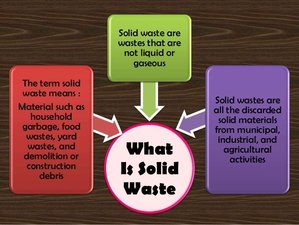
Human activities produce a wide range of waste from an equally wide range of activities.Solid domestic waste is the waste generated from households. This does not include industrial waste that is produced from industrial processes This material can be made up of:
Garbage: the four broad categories:
- paper
- cardboard
- metal, glass
- plastics
- e-waste
- household chemicals
Garbage: the four broad categories:
- Organic waste: kitchen waste, vegetables, flowers, leaves, fruits.
- Toxic waste: old medicines, paints, chemicals, bulbs, spray cans, fertilizer and pesticide containers, batteries, shoe polish.
- Recyclable: paper, glass, metals, plastics.
- Soiled: hospital waste such as cloth soiled with blood and other body fluids.
8.3.U2 The abundance and prevalence of non-biodegradable pollution (such as plastic, batteries or e-waste) in particular has become a major environmental issue.
- Explain why the prevalence of non-biodegradable pollution (such as plastic, batteries, or e-waste) has become a major environmental issue.
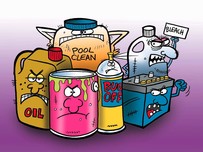 image from https://www.pinterest.com/aquaventuremlt/save-our-oceans
image from https://www.pinterest.com/aquaventuremlt/save-our-oceans
As we become more technologically advanced, we produce materials that can withstand extreme temperatures, are durable and easy to use. Plastic bags, synthetics, plastic bottles, tin cans, and computer hardware- these are some of the things that make life easy for us.
Non-biodegradable waste is a type of waste that can not be broken down into its base compounds by micro-organisms, air, moisture or soil in a reasonable amount of time. Non-biodegradable waste is an environmental concern, as it threatens to overwhelm landfills and create disposal problems.
Non-biodegradable waste is a type of waste that can not be broken down into its base compounds by micro-organisms, air, moisture or soil in a reasonable amount of time. Non-biodegradable waste is an environmental concern, as it threatens to overwhelm landfills and create disposal problems.
For many years, most manufacturers and production facilities have operated using a linear economy. This ‘take, make, dispose’ method of manufacturing means that instead of recycling the raw materials and any waste associated with the production process, they are disposed of instead.
Not only does a linear economy product a huge amount of unwanted, and sometimes dangerous landfill waste, it also puts a lot of pressure on the country’s plummeting resources as new raw materials need to be found and utilized
Not only does a linear economy product a huge amount of unwanted, and sometimes dangerous landfill waste, it also puts a lot of pressure on the country’s plummeting resources as new raw materials need to be found and utilized
8.3.U3 Waste disposal options include landfills, incineration, recycling and composting
- Discuss the waste disposal options - landfill, incineration, recycling and composting.
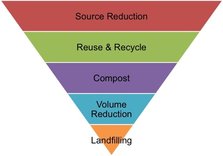
There are eight major groups of waste management methods, each of them divided into numerous categories. Those groups include source reduction and reuse, animal feeding, recycling, composting, fermentation, landfills, incineration and land application. You can start using many techniques right at home, like reduction and reuse, which works to reduce the amount of disposable material used
- Landfills - Throwing daily waste/garbage in the landfills is the most popularly used method of waste disposal used today. This process of waste disposal focuses attention on burying the waste in the land.
- Incineration/Combustion - a type disposal method in which municipal solid wastes are burned at high temperatures so as as to convert them into residue and gaseous products. The biggest advantage of this type of method is that it can reduce the volume of solid waste to 20 to 30 percent of the original volume, decreases the space they take up and reduce the stress on landfills.
- Recovery and Recycling - process of taking useful discarded items for a specific next use. These discarded items are then processed to extract or recover materials and resources or convert them to energy in the form of useable heat, electricity or fuel.
- Composting - a easy and natural bio-degradation process that takes organic wastes i.e. remains of plants and garden and kitchen waste and turns into nutrient rich food for your plants.
8.3.U4 There are a variety of strategies that can be used to manage SDW (reference to figure 3) influenced by cultural, economic, technological and political barriers. There strategies include 1) altering human activity - for example, through a reduction of consumption and composting of food waste, 2) controlling the release of pollutant - governments create legislation to encourage recycling and reuse initiative and impose taxes for SDW collection and on disposable items, 3) reclaiming landfills, using SDW for waste to energy programs implementing initiatives to remove plastics from the Great Pacific garage patch (clean-up and restoration)
- Compare and contrast the various pollution management strategies for SDW.
- Discuss the impact of culture, economics, technology and political attitudes on the choice of SDW management strategies employed by a society.
Pollution management strategies that should be considered are recycling, incineration, composting and landfill.
Cause
Reduce - Reduce packaging
Reuse - Choose second hand materials or reusable containers
Recycle - Choose materials that can be recycled
Composting - Organic can be composted at source. Choose biodegradable materials
Effect
Incineration - Easy and Quick. Releases greenhouse gases such as methane which could be used for powering but can produce toxic pollutants
Landfill - Might pollute groundwater through leeching. We are facing less available space
Sealed landfill - Prevent leeching but higher costs. There is limited space
Composting - Can turn organic wastes into resources
Cause
Reduce - Reduce packaging
Reuse - Choose second hand materials or reusable containers
Recycle - Choose materials that can be recycled
Composting - Organic can be composted at source. Choose biodegradable materials
Effect
Incineration - Easy and Quick. Releases greenhouse gases such as methane which could be used for powering but can produce toxic pollutants
Landfill - Might pollute groundwater through leeching. We are facing less available space
Sealed landfill - Prevent leeching but higher costs. There is limited space
Composting - Can turn organic wastes into resources
Application and skills:
8.3.A1 Evaluate SDW disposal options
Strategies for dealing with SDW:
Composting
|
Advantages
|
Disadvantages
|
|
|
Recycling
|
Advantages
|
Disadvantages
|
Incineration
|
Advantages
|
Disadvantages
|
Landfills
|
Advantages
|
Disadvantages
|
8.3.A2 Compare and contrast pollution management strategies for SDW
8.3.A3 Evaluate, with reference to figure 3, pollution management strategies for SDW by considering recycling, incineration, composting and landfills.
[Students should consider the amount and source of non-biodegradable pollution generated within a chosen locality and how it is managed]
[Students should consider the amount and source of non-biodegradable pollution generated within a chosen locality and how it is managed]
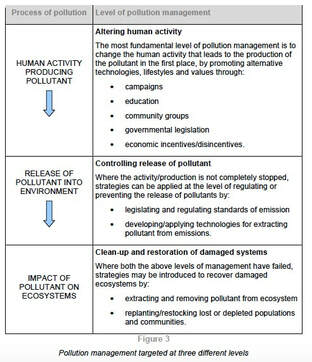
Human activity
Controlling release
Clean-up and Restoration
- reduce consumption
- compost food waste
- reduce packing
- reuse clothes/goods
Controlling release
- separate wastes into different types
- legislate recycling
- education about recycling
- tax SDW
Clean-up and Restoration
- reclaim landfills
- use incineration for energy production
- collect plastics/discarded from the environment
Key Terms
|
solid domestic waste
upcycling humus diseases trash-to-energy linear economy |
incineration
composting hazardous waste sanitary landfill biodegradable reuse |
landfill
vericomposting mercury chemicals inert repurpose |
composting
wasteful methane organic waste circular economy WEEE |
recycling
leachate community e-waste reduce |
Classroom Materials
Case Studies
Case Studies
- Detailed examples of the pros & cons of the 4 main types of solid domestic waste disposal options (landfills, incinerators, composting, the 6Rs)
Powerpoint and Notes Adapted from Brad Kremer and PBrooks
Your browser does not support viewing this document. Click here to download the document.
Your browser does not support viewing this document. Click here to download the document.
Correct use of terminology is a key skill in ESS. It is essential to use key terms correctly when communicating your understanding, particularly in assessments. Use the quizlet flashcards or other tools such as learn, scatter, space race, speller and test to help you master the vocabulary.
Useful Links
Topic 8.3 Solid Domestic Waste - NicheScience
What a Waste: An Updated Look into the Future of Solid Waste Management
Urban Environmental and Waste Management - Urban Environmental Management
Municipal Solid Waste - EPA
Composition of Waste in the UK - Marden Edwards Journal
Solid Waste - Learner
Composting - Planet Nature
Waste Generation Scheme - Grida
How Landfills Work - How Stuff Works
Recycling Facts - Recycling Revolution
Hazardous Waste Nat Geo: Half Life Dealing with Nuclear Waste
In The News
More than 1.5 billion masks believed to have entered oceans in 2020, The Denver Channel, 24 Dec 2020
How Big Oil and Big Soda kept a global environmental calamity a secret for decades, Rolling Stone, 3 March 2020
Solar Panel Waste: The Dark Side of Clean Energy, Discover, 14 Dec 2020
Plastic To Dust - Science Daily 12 May 2014
NASA Warms Up To Maryland's Trash - NASA 8 May 2003
More Emphasis Needed on Recycling and Reuse of Li-ion Batteries - Science Daily 22 May 2013
eWaste - National Geographic Jan 2008
International-mindedness:
- Pollution can be transborder, the pollution from one country may affect another
- Differences in development level of countries can influence the amount and type of SDW they generate
TOK
- The circular economy can be seen as a paradigm shift-does knowledge develop through paradigm shifts in all areas of knowledge?
Video Clips
Trashed - No Place For Waste with the participation of Jeremy Irons, looks at the risks to the food chain and the environment through pollution of our air, land, and sea by waste. The film reveals surprising truths about very immediate and potent dangers to our health
It's time to get back out into the world because online shopping is killing us, psychologically and environmentally.
The basics of sustainable waste management in animated form, produced for the Östergötland County Council in Sweden, for the "Waste To Energy" EU project.
A powerful documentary about the dumping of toxic computer wastes on developing nations, specifically Guiyu, China
Waste is directly linked to human development, both technologically and socially. The composition of different waste has varied over time and location with the connection between waste materials and industrial development and innovation
Where do all our easy and free online returns really end up? We bought products from Amazon and then returned them with tracking devices hidden inside to follow the trail. Next, we posed as buyers in the lucrative liquidation marketplace where we bid on a truckload of returned products. How much can we resell compared to what will get trashed?
There's a world of opportunity to re-think and re-design the way we make stuff. 'Re-Thinking Progress' explores how through a change in perspective we can re-design the way our economy works - designing products that can be 'made to be made again' and powering the system with renewable energy. It questions whether with creativity and innovation we can build a restorative economy
Economic growth across developing Asian countries has led to a sharp increase in consumption. With higher levels of waste now generated, local governments struggle to cope with solid waste management
Ever wonder how the landfill gas-to-energy process works? This video takes you through how Waste Management converts naturally occurring landfill gas into clean renewable energy at its LFGTE facilities across the country.
The Great Pacific Garbage Patch is a massive dump of floating garbage in the Pacific Ocean. We contribute to it everyday by littering and using un-biodegradable materials. Our trash is taken downstream from rivers into the ocean, where currents sweep it to the closest patch.
Commercial waste recycling in Devon, U.K.
This talk was given at a local TEDx event, produced independently of the TED Conferences. It's hard to comprehend the amount of plastic waste humans produce every single day. But the impact is impossible to ignore. However, the answer is not recycling -- it's reuse
It’s important for everyone to go green and work together in creating a sustainable future. One of the best ways to help save Mother Earth is to recycle. But it’s not always easy to tell what can and can’t be recycled, especially when it comes to plastic. You’re probably wondering: What do the numbers on plastic mean? What numbers of plastic are recyclable
Rajan Ahluwalia has been in the recycling business since 1989. He is from Mumbai (Bombay) India
18-year-old Boyan Slat combines environmentalism, entrepreneurism and technology to tackle global issues of sustainability.
Lauren is an Environmental Studies graduate from NYU and former Sustainability Manager at the NYC Department of Environmental Protection, and the amount of trash that she has produced over the past three years can fit inside of a 16 oz. mason jar.
San Francisco diverts 80% of its waste from landfills, more than any other major city in North America. It hopes to achieve zero waste by 2020. Here's a look at what makes the city's waste management system so successful.
Engineer Toby McCartney explains how his Scottish start-up MacRebur is persuading councils to use local waste plastic to build roads. Two English councils have already started building roads this way.
